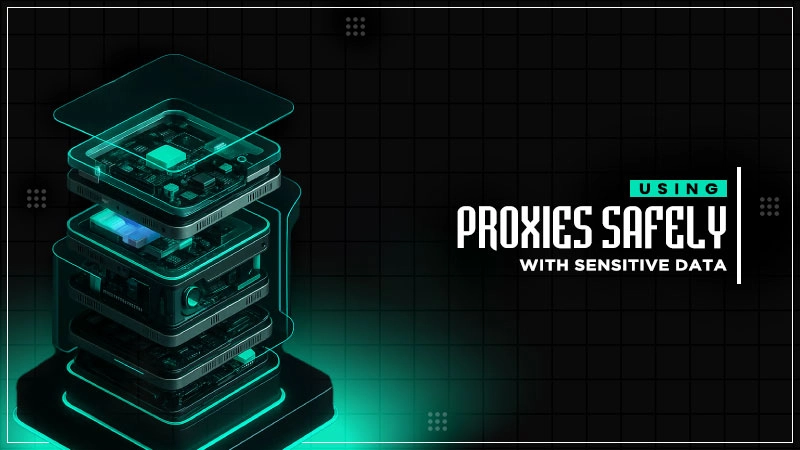Traditional security relies on everything within the network perimeter, failing when a threat arrives.
How MDR Fits Into a Zero Trust Security Framework
Zero Trust operates on the belief that no one can automatically be trusted. Actually, no one gets access to your network automatically. All connections must be validated. All users must verify their identity. Validation occurs continually, not just at login.
Current threats can infiltrate networks and move laterally within the network. Therefore, Zero Trust exists to take away that vulnerability, and fundamentally, that violation. Integrating MDR and Zero Trust allows organizations to gain visibility and respond at unprecedented speed.
MDR acts as an agent of continuous monitoring, identifying threats that exist within your networks. Zero Trust acts as a barrier to lateral movement. Together, they present a strong assumption of defense.
MDR is the line of support and extended defense beyond the Zero Trust architecture, and ultimately builds security. Here is an understanding of how managed detection and response will integrate with the tenets of Zero Trust principles.
KEY TAKEAWAYS
- Zero Trust and MDR are essential, non-competing strategies.
- It provides continuous monitoring for access violations, unusual user behavior, and non-compliant devices.
- Zero Trust’s microsegmentation makes lateral movement difficult
- These policies are based on actual attack trends and necessary exceptions.
Understanding the Principles of Zero Trust Security
Verify every access permission explicitly rather than trusting networks or positions. Authentication isn’t a one-time event, it’s continuous verification. Access gets denied by usual then granted only when necessary. That inverted trust model shifts everything.
Assume breach refers to a plan for compromise happening. When breach happens, you have already prevented lateral movement. Damage stays localized rather than spreading system-wide.
Least privilege shows users receive minimum access needed for their job. Admin rights do not get handed out casually. Temporary elevated access happens only when needed then revoked immediately. That restriction evicts mistakes from becoming catastrophes.
In case an account gets compromised, the harm is limited to that account’s permissions. Wide-ranging accounts becoming compromised is catastrophic. Restricting access by job restricts compromise damage.
Microsegmentation divides networks into small segments. Moving between segments requires verification again. That segmentation stops lateral movement. A compromised device cannot automatically reach other network segments. It is like having locked doors between sections of your network. That compartmentalization pushes attackers to break through multiple barriers.
How MDR Adds Continuous Validation and Monitoring
MDR analysts watch for access violations constantly. Users trying unauthorized access. Devices accessing systems they shouldn’t. Unusual access patterns in comparison to baseline behavior. MDR detects these violations instantly.
That rapid identification catches compromises before extensive damage occurs. Zero Trust policies prevent unauthorized access technically. MDR detects those attempts violating those policies.
Behavioral analysis determines compromised accounts or devices. Legitimate users have regular access patterns. Compromised accounts detached from those patterns. Unusual data access. Unexpected system transforms. Access from unusual locations. MDR tools flag these deviations. That behavioral detection catches those attacks that might not trigger traditional alerts.
Device posture validation allows devices to meet security requirements. Devices without current patches do not connect. Devices with antivirus disabled do not connect. Without encryption, devices are enabled and do not connect. MDR verifies these requirements continuously. Non-compliant devices lose access in no time. That enforcement ensures network security posture stays high.
Reducing Lateral Movement Through Rapid Detection
Most breaches include lateral movement inside networks. Attackers compromise starting systems then move deeper. Zero Trust makes that movement harder. MDR detects attempts occurring despite barriers.
Before reaching valuable assets, early detection stops lateral movement. That detection advantage prevents catastrophic compromise.
Containment immediately happens when movement is detected. Compromised endpoints become isolated. Access gets revoked. Lateral movement stops. MDR provides the visibility that allows rapid response.
Without visibility, lateral movement tries to be undetected. With visibility, attackers get quickly stopped. That speed difference is critical.
Attack chains get interrupted before completion. Multi-step attacks require moving via systems. Each step need getting past Zero Trust controls. MDR detects attempts at each step. Attackers cannot complete their plans if each step gets stopped and detected. That prevention of chain completion stops attacks before reaching objectives.
Bridging the Gap Between Policy and Real-World Threat Response
Zero Trust policies define ideal security. Real-world implementation discovers exceptions. Users authentically need access that standard policies deny. Systems require exceptions for business purposes. MDR provides intelligence about which exceptions are really needed. Policy gets refined based on MDR findings. That feedback loop enhances policies over time.
Incident response turns out to be more targeted. MDR provides context about threats. Understanding threat tactics and objectives guides response. You do not respond identically to all threats. Major threats get aggressive responses.
Minor threats get proportional response. That intelligence-driven feedbacks is more effective than one-size-fits-all approaches.
Policy enforcement improves with threat intelligence. Knowing what attacks are happening lets you tighten relevant guidelines. If certain attack types are prevalent, policies targeting those attacks get stricter. Intelligence brings policy evolution. That threat-informed approach prevents policies from becoming stable and obsolete.
Bottom Line
Zero Trust and MDR are other strategies, not competing approaches. Zero Trust stops unauthorized access technically. MDR detects attempts and breaches that get through. Together they create resilience traditional approaches cannot match. That combination is a modern cybersecurity baseline, not an advanced option.
Organizations executing only Zero Trust miss insider threats and policy violations. Organizations setting up only MDR miss prevention that Zero Trust provides. Both are necessary. Neither alone is enough. That reality drives modern security architecture.
Implement Zero Trust policies defining security needs. Implement MDR providing visibility and detection. Let them function together toward resilient defense.
Frequently Asked Questions
What is traditional perimeter security?
Why is MDR necessary if Zero Trust prevents unauthorized access?
Zero-trust policies prevent successful unauthorized access, but they do not eliminate attempts. But MDR provides the continuous human and technical monitoring needed to detect threats.
How does MDR help with the “least privilege” principle of Zero Trust?
MDR’s behavioral analytics monitor user activity to ensure accounts only use the access they need, indicating a compromised account operating outside its intended scope.
Can I achieve effective security with just zero trust?
No, Zero Trust without MDR blinds you to the threats lurking inside.
Running an organization is a highly complex job. You have to deal with taxes, guidelines, and many more operational tasks…
In today’s connected world, knowing how to text someone anonymously is a valuable skill for protecting your privacy. Whether you…
In this digital world, just getting data is not enough for marketers – they need data that works fast, stays…
Is your Android phone starting to act strangely? This usually happens after a change in settings, a new update, or…
Ever wondered why it’s called the Recycle Bin? It is because your deleted files are not gone for good, at…
Icons are much more than simple visual adornments. They are the interface contracts for all outcomes, status signals, and the…
From internal financials and health records to payment tokens and customer identifiers, sensitive data is ingrained in day-to-day operations. According…
When your rent, gas, groceries, and internet bills all keep going up at the same time, have you ever wondered…
If you are a marketing professional, you have probably noticed that the amount of content your department produces has increased…






